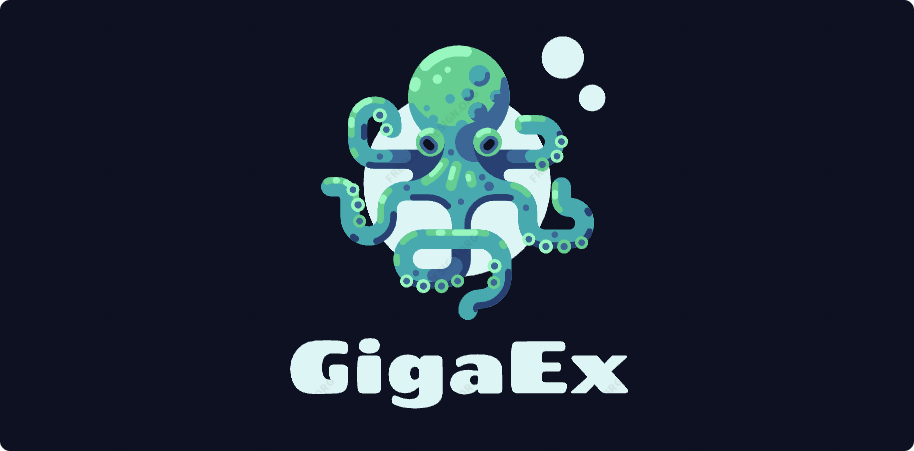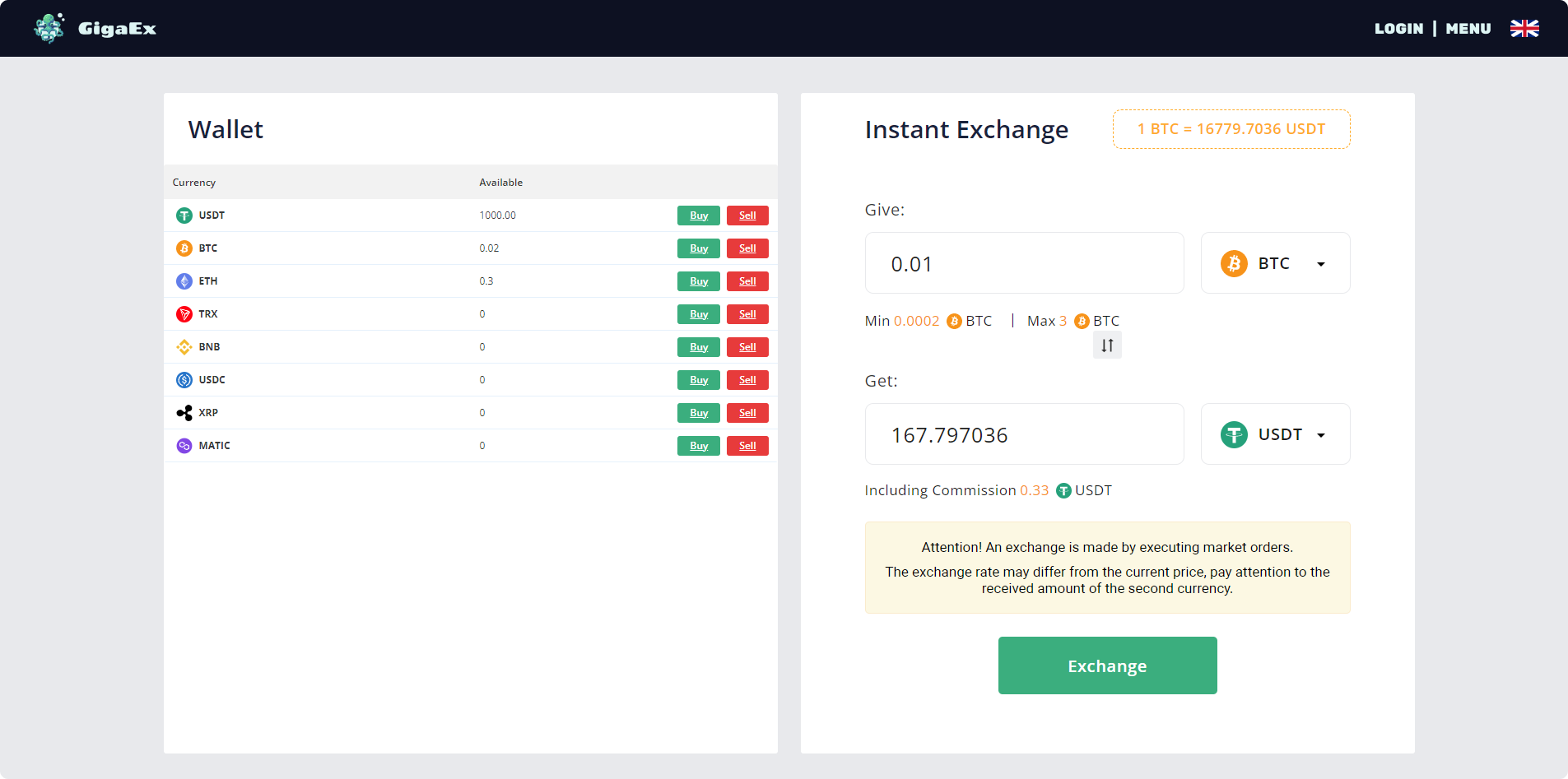Table of Contents
Introduction
The client set us the task of developing a centralized GigaEx exchange with the ability to replenish with fiat currencies (EUR) and support for its own exchange token (more about token development here), which will be used in specialized sections of the exchange (lunchpad and staking). Our team worked out the concept of the exchange in detail, analyzing in detail the goals and expectations of the client, as a result of which a full-fledged technical task for the development of a centralized exchange was created.
We changed the brand name and blurred out any references in the screenshots so as not to violate the NDA for our client.
Peculiarities
A centralized exchange is a complex set of software code that includes the core of the trading engine and many modules of additional functionality, such as systems for working with cryptocurrencies, payment systems, and other specialized modules.
Our team has been working on the development of a trading cryptocurrency platform for more than five years, which became the basis for creating a customizable exchange engine. The client, working with us, receives a convenient and quickly deployable platform for his own centralized exchange.
The basic functionality of the exchange includes:
- Full customizable graphical interface
- Trading terminal (simplified interface for quick exchange of cryptocurrencies and advanced interface for advanced users)
- Modules for working with cryptocurrencies BTC, ETH, USDT (deposit, KYT verification, storage and withdrawals)
- User interface for account and balance management, security and verification settings.
- Administrative interface for managing the exchange
Depending on the tasks set, after the basic functionality is deployed, our team develops additional functionality, such as: specialized modules (for example, Staking and Lunchpad), connects fiat payment systems or integrates other third-party services depending on the needs of the client. All this is conveniently connected to the main functionality and is available for management in a single administrative panel.
Development
Initially, we developed the terms of reference for the centralized exchange, and also prepared the corporate identity and layouts of the exchange’s graphical interface.
After the approval of the terms of reference and the design of the exchange with the client, our team began to develop the GigaEx exchange with its own exchange token.
The first step for the GigaEx exchange was to deploy a backend (server part) with support for basic functionality. With our help, the client registered all the accounts necessary for the operation of the exchange in technical services, such as web hosting, mail and SMS providers, and blockchain data providers. Further, according to the layouts, the front-end (graphical interface – client part) of the exchange was laid out. After debugging and testing, the operation of the basic functionality and the appearance of the exchange were demonstrated to the client. The client himself was able to test the operation of the exchange.
Getting timely feedback is very important for the development process. allows you to maintain communication between the customer and the contractor, adjust the development process and create a product that exactly meets the client’s expectations. The first stage of development took one month.
Next, the specialized functionality required by the client was deployed:
- An exchange token (ERC-20 and BEP-20 standard) Giga Token for the exchange was created, which is necessary for the implementation of the sections: Lunchpad and Staking. You can read more about token development here.
- The Lunchpad and Staking modules have been deployed and adapted to the needs of the client.
- Payment systems are connected for the possibility of replenishing with fiat currency (EUR). To integrate EUR replenishment, the client did a lot of work to bring the legal regime of operation and functioning of the exchange in line with the requirements of the financial regulator of the European Union. Including KYC verification of exchange users and KYT verification of user transactions.
The second stage of development was also completed within one month, following which the fully functional functionality was demonstrated to the client. Based on the results of testing, the client compiled a list of necessary improvements and wishes. Our team is very attentive to the feedback received from the client and implements the received comments at different stages of development.
The next stage of development was the preparation for the launch of an open working version of the centralized exchange. At this stage, the exchange has been tested for security, a security audit has been conducted by a third-party company. As a result of the audit, the client received confidence that the final product is safe, does not contain backdoors, the so-called “holes”, and is maximally protected from hacks.
At the final stage, an open working version of the GigaEx centralized exchange was launched. The entire development process took three months. After the development was completed, the client received not only the finished product, but also comprehensive technical and user documentation for it. With the help of which the client can operate a centralized exchange on his own.

 Telegram
Telegram 

